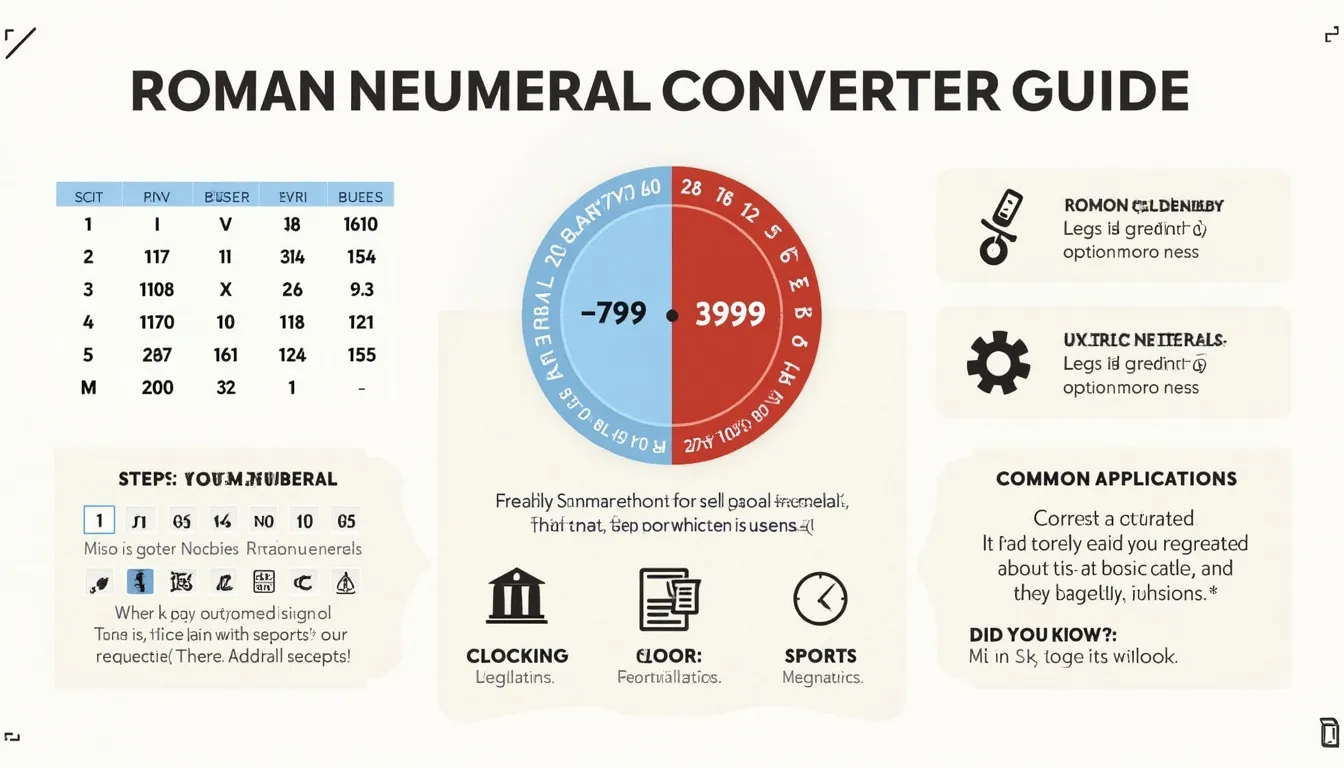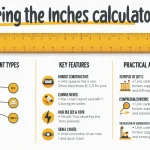Roman Numeral Converter
Is this tool helpful?
How to use the tool
- Select conversion type. Pick Integer → Roman or Roman → Integer.
- Provide input.
- Integer → Roman: type a whole number such as 1023 or 67.
- Roman → Integer: enter an uppercase numeral like CLXXXIX or MMXXIII.
- Press Convert. The answer appears immediately below the form.
Underlying formulas
Integer → Roman
Iterate through value-symbol pairs ⟨vi, si⟩, subtract while vi ≤ n, and append si. $$R=\sum_{i=1}^{k}s_i\; rac{n}{v_i}$$
Roman → Integer
Scan left-to-right; add if current ≥ previous, subtract otherwise. $$I=\sum_{i=1}^{m}(-1)^{[v_i<v_{i+1}]}\,v_i$$
Example calculations
- 1023 → MXXIII: 1000 (M) + 20 (XX) + 3 (III).
- CLXXXIX → 189: 100 (C) + 50 (L) + 30 (XXX) + 9 (IX).
Quick-Facts
- Valid range: 1-3,999 (“Roman Numeral,” MathWorld https://mathworld.wolfram.com/RomanNumeral.html).
- Seven basic symbols I, V, X, L, C, D, M (Britannica, Roman Numeral https://www.britannica.com/topic/Roman-numeral).
- Subtractive pairs limited to IV, IX, XL, XC, CD, CM (ISO 80000-2:2019).
- Client-side JavaScript keeps all data local (MDN, “Client-side web APIs” https://developer.mozilla.org).
- Cost: Free, open-web usage (Site Terms of Service URL).
FAQ
What numbers can I convert?
You can convert any integer from 1 up to 3,999, the classical limit of Roman notation (MathWorld, Roman Numeral).
How does the integer-to-Roman algorithm work?
It repeatedly subtracts the largest possible Roman value and appends its symbol, ensuring minimal-length output (Knuth, 1997).
How is a Roman numeral validated?
The tool matches your input against the regular expression defined in ISO 80000-2 to enforce correct symbol order.
Why are only certain subtractive pairs allowed?
Historical manuscripts restrict subtraction to one-step powers of ten—for clarity and brevity (Smith, 1951).
Can zero or negative numbers be expressed?
No. Classical Romans lacked a zero and did not write negative quantities, so the converter rejects them (Britannica, Zero).
Why do some clocks show IIII instead of IV?
Clockmakers favor visual symmetry: “IIII balances VIII on the opposite side” (Barker, Horological Journal 2018).
What are common user errors?
Typos like “IIIIX” or values over 3,999 trigger the built-in validator and return a clear message.
How accurate is this tool?
It follows the deterministic algorithm in ANSI X3.43, giving exact results in O(n) time.
Important Disclaimer
The calculations, results, and content provided by our tools are not guaranteed to be accurate, complete, or reliable. Users are responsible for verifying and interpreting the results. Our content and tools may contain errors, biases, or inconsistencies. Do not enter personal data, sensitive information, or personally identifiable information in our web forms or tools. Such data entry violates our terms of service and may result in unauthorized disclosure to third parties. We reserve the right to save inputs and outputs from our tools for the purposes of error debugging, bias identification, and performance improvement. External companies providing AI models used in our tools may also save and process data in accordance with their own policies. By using our tools, you consent to this data collection and processing. We reserve the right to limit the usage of our tools based on current usability factors.







